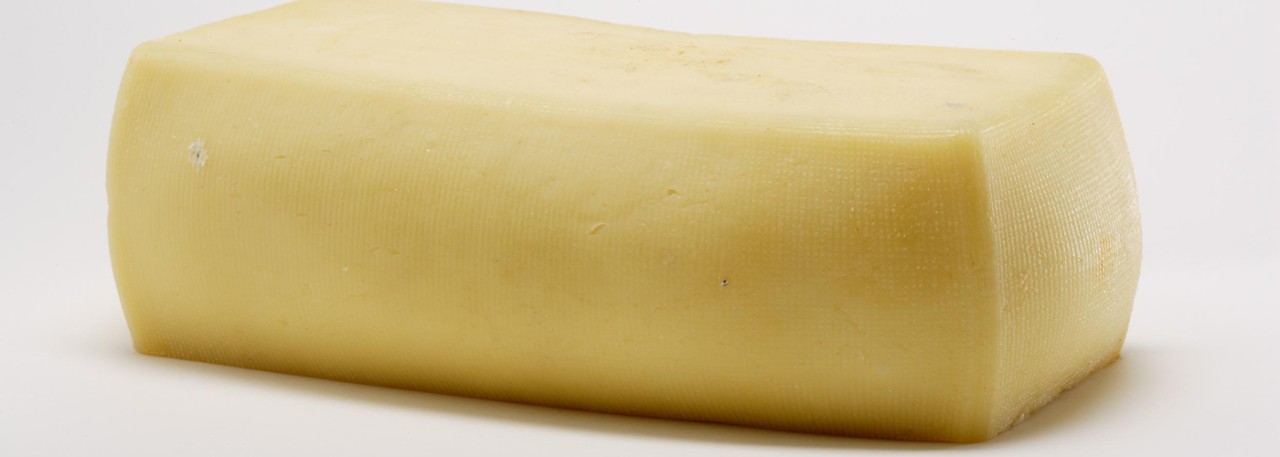.png.transform/rendition-xs/image_image%20(1).png)
Queso Nata de Cantabria PDO
Waxy rind cheese with smooth texture and buttery flavour.
Tasting notes
The flavor is very mild, between sweet and sharp. The aroma of fresh cream has a slight sparkle and the texture is firm, creamy, very buttery and melts in the mouth.
Other notes
Either cylindrical in shape or a parallelepiped with a rectangular base and weighing 400 to 2,880 g (14 oz to 1 lb). The rind is soft and bone-colored, as is the paste which normally has no holes.Minimum fat content is 45% of dry matter.
Production / Processing method
The milk must have a maximum acidity of 18-20 Dornic before the process starts. Coagulation uses animal rennet from calves of the Pintas de Cantabria breed or other enzymes authorized by the Regulatory Council. The process is carried out at 30ºC (86ºF) for 40 minutes. The curds are cut until reduced to grains 5 mm (0.19”) in diameter, then re-heated to 34ºC (93ºF).The cheeses are then molded. Pressing lasts for a maximum of 24 hours, as does salting, which is done by immersion in brine. The minimum ripening period is seven days, as from the completion of salting. During this period, the cheeses are turned and cleaned.
Geography / Relief and climate
Cantabria is located in the north of the Iberian peninsula and comprises a number of mountain ranges and broad valleys. The highest parts are inland, mostly along the southern border where the Cantabrian mountains join up with the Castilian plateau.
The relief has led to erosion giving rise to entisol or very under-developed soils, which are found on large surface areas. In the highest parts, the soils are limey, with the remains of plants which are beginning to colonize the rock. These are very occasionally, or seasonally, used for pasture.
In most of Cantabria, the climate is Atlantic, mild and damp. Along the coast, the temperatures are moderate in both summer and winter, and rarely fall below 0ºC (32ºF). In the inland valleys, the winters are slightly colder and wetter and the summers drier. To the south of the province, the land is higher and further from the sea so the climate is continental, colder and more extreme, with very low temperatures, heavy snowfalls in winter and drier summers.
Rainfall is frequent, especially in autumn and spring, with average annual rainfall of 900 mm (35½''). The river network results from the irregular, complex topography and the high rainfall. Almost all the rivers flow into the Cantabrian sea forming rias. The most important rivers are Pas, Besaya, Asón and Saja. Vegetation is abundant and varied, with plants that are typical of damp climates. This means the countryside is always green and fairly uniform. In inland or more mountainous areas, there are woods with native species.
Regulatory Council
Consejo Regulador de la DOP Queso Nata de Cantabria
C/ Héroes 2 de Mayo, 27
39600 Muriedas
Cantabria
Tel: (+34) 942 269 855
odeca@cantabria.es
www.alimentosdecantabria.com
Sources:
- Spanish Ministry of Agriculture
The minimum ripening period is seven days, as from the completion of salting. During this period, the cheeses are turned and cleaned.


- Nata de Cantabria 1
- Nata de Cantabria 2

Muriedas (Cantabria)
